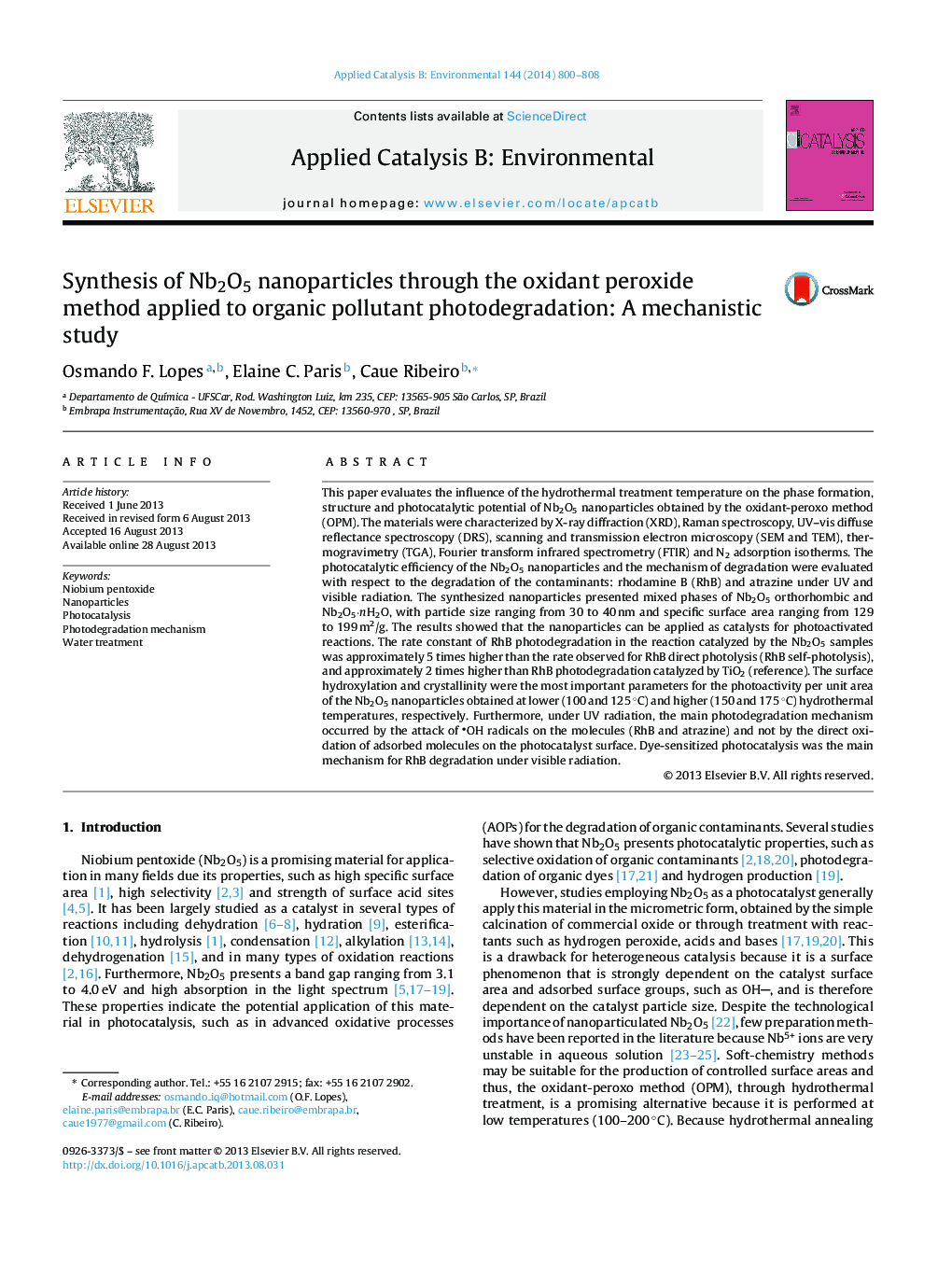| کد مقاله | کد نشریه | سال انتشار | مقاله انگلیسی | نسخه تمام متن |
|---|---|---|---|---|
| 45420 | 46410 | 2014 | 9 صفحه PDF | دانلود رایگان |

• OPM supplies orthorhombic-Nb2O5 nanoparticles which have high acidic and specific surface area.
• The photoactivity of Nb2O5 was related to the crystallinity and surface groups.
• The main mechanism for pollutants photodegradation under UV light was led by OH attack.
• Dye-sensitized photocatalysis was shown to be efficient for degradation of pollutants.
This paper evaluates the influence of the hydrothermal treatment temperature on the phase formation, structure and photocatalytic potential of Nb2O5 nanoparticles obtained by the oxidant-peroxo method (OPM). The materials were characterized by X-ray diffraction (XRD), Raman spectroscopy, UV–vis diffuse reflectance spectroscopy (DRS), scanning and transmission electron microscopy (SEM and TEM), thermogravimetry (TGA), Fourier transform infrared spectrometry (FTIR) and N2 adsorption isotherms. The photocatalytic efficiency of the Nb2O5 nanoparticles and the mechanism of degradation were evaluated with respect to the degradation of the contaminants: rhodamine B (RhB) and atrazine under UV and visible radiation. The synthesized nanoparticles presented mixed phases of Nb2O5 orthorhombic and Nb2O5·nH2O, with particle size ranging from 30 to 40 nm and specific surface area ranging from 129 to 199 m2/g. The results showed that the nanoparticles can be applied as catalysts for photoactivated reactions. The rate constant of RhB photodegradation in the reaction catalyzed by the Nb2O5 samples was approximately 5 times higher than the rate observed for RhB direct photolysis (RhB self-photolysis), and approximately 2 times higher than RhB photodegradation catalyzed by TiO2 (reference). The surface hydroxylation and crystallinity were the most important parameters for the photoactivity per unit area of the Nb2O5 nanoparticles obtained at lower (100 and 125 °C) and higher (150 and 175 °C) hydrothermal temperatures, respectively. Furthermore, under UV radiation, the main photodegradation mechanism occurred by the attack of OH radicals on the molecules (RhB and atrazine) and not by the direct oxidation of adsorbed molecules on the photocatalyst surface. Dye-sensitized photocatalysis was the main mechanism for RhB degradation under visible radiation.
Figure optionsDownload as PowerPoint slide
Journal: Applied Catalysis B: Environmental - Volume 144, January 2014, Pages 800–808